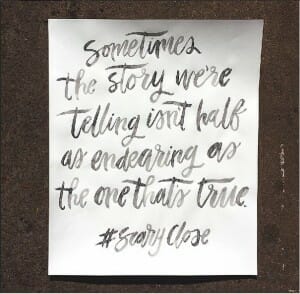I heard this advice a lot when I was a Development Director: “Don’t let your grantwriter write your appeals to donors.”
Why? Supposedly, foundations and donors are two different species.
Foundations have deadlines. Donors give on impulse.
Foundations check to see if you meet their written requirements: what questions you have to answer for them, in how many words, with what documentation attached.
Donors spend three seconds looking at your letter before they decide whether to read it or throw it in the recycling bin.
It was well-meaning advice. But maybe it was wrong.
The best advice might have been to let a storyteller work on both.
What Storytelling Does for Funders
Pamela Grow, the dean of direct mail fundraising for small nonprofits, remembers when she worked at a foundation. After reading thousands of proposals, there was one applicant she looked forward to hearing from every time.
It was the one who told her stories.
Edith was the impassioned founder of her organization, a faith-based nonprofit serving women and children. Every grant proposal from their organization featured dynamic stories of their clients’ struggles, challenges, and most importantly, victories. Oftentimes, her stories read like magazine serials, and they really brought the organization’s mission to life.
“Remember Joan S?” Edith would write. “She’s now living in her own home, has regained custody of her children, and next June she’ll be graduating from college…”
Pam tells us that the storytelling organization was funded for twice as long as the foundation’s guidelines allowed. (She can say that now, since she doesn’t work there any more!)
An Even Bigger Impact on Donors
Okay, so here is a major grantmaking foundation, with written guidelines and procedures, a competitive process, and a bureaucracy that included the President, the Vice President of Administration, the Vice President of Programming, and the Vice President of Finance.
Those are supposed to be the hard heads at the foundation, the sticklers, the keepers of the gate.
And all of them wanted to read this particular grant application every time it came in. Because it told great stories.
The donors on your list aren’t professional funders. You don’t have to overcome their skepticism. You just have to touch their hearts.
It’s so simple: always tell stories to your donors. They’ll look forward to hearing from you, and they will give.


